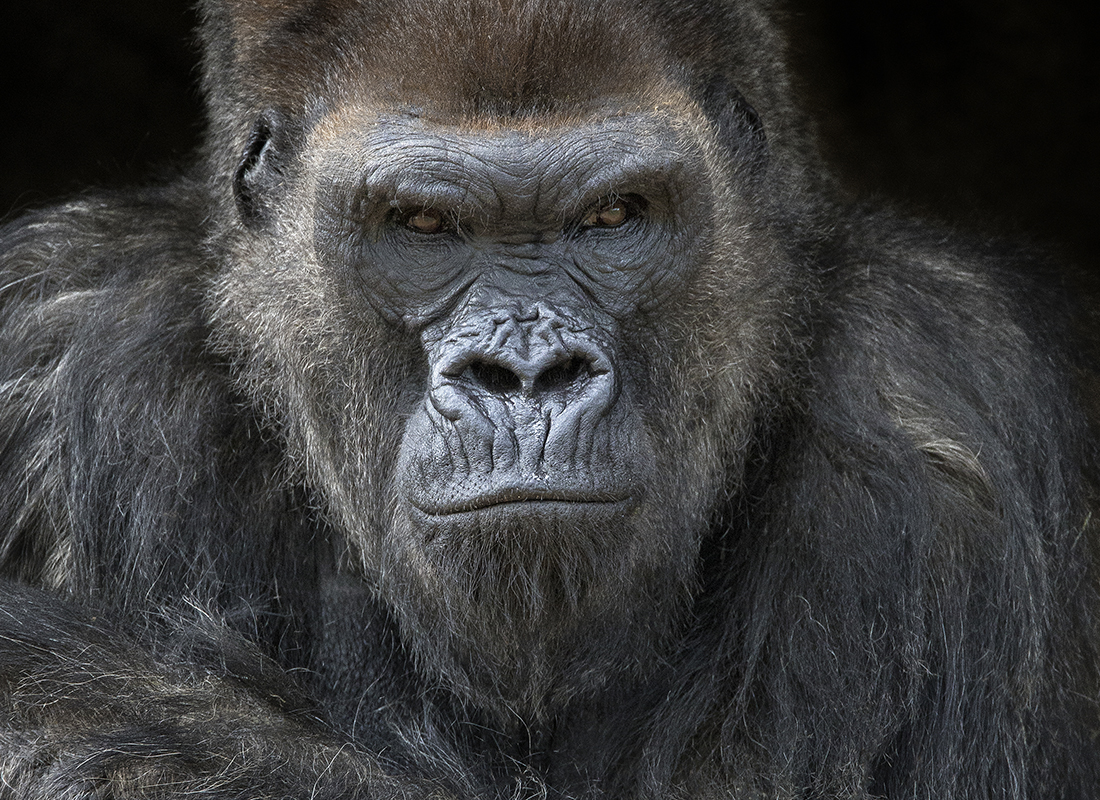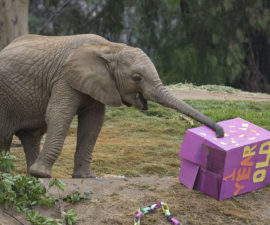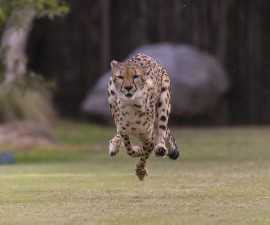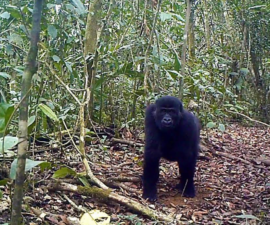The Safari Park’s silverback gorilla Winston is the embodiment of “large and in charge,” but there’s another side to the big guy.
BY Wendy Perkins
Photography by Ken Bohn
Powered by youthful exuberance, two young male gorillas tumble together as they wrestle. They stop for a moment, then zoom off, racing up, over, and under logs in their habitat. Most of the other gorillas ignore the youngsters, continuing to chew on greens or just enjoy the gentle sunshine and soothing breeze. One, however, is watching: as a silverback, Winston is the leader of the gorilla troop at the San Diego Zoo Safari Park. And the 46-year-old takes his position seriously.
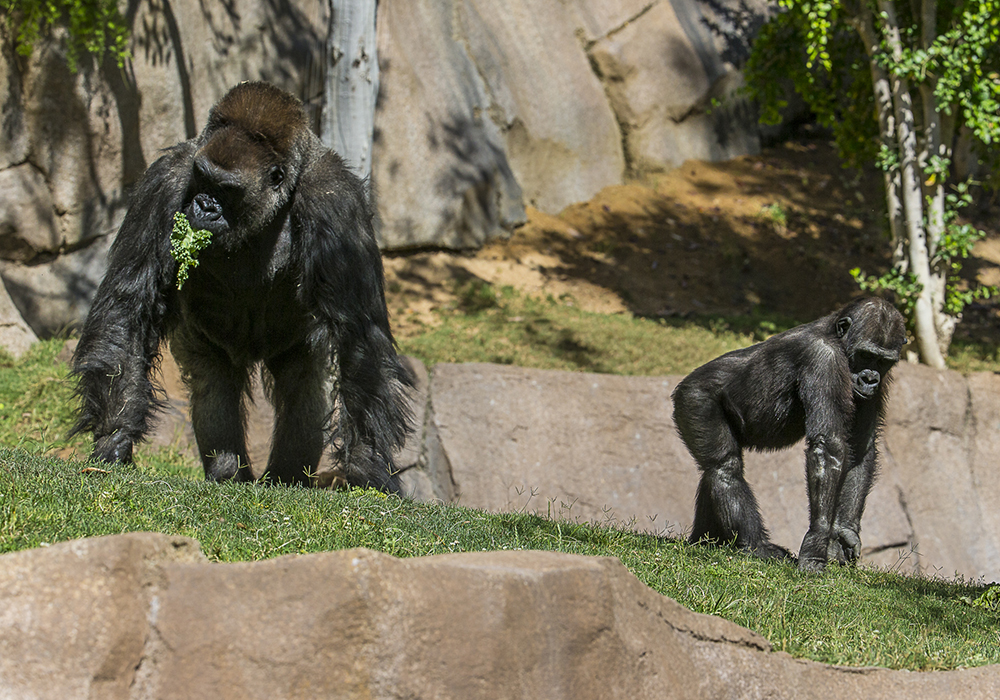
A POWERFUL PRESENCE
Winston is always aware of what’s going on among his troop, and youngsters respect his authority.
“We’re fortunate to have a really good, cohesive troop,” said Peggy Sexton, lead mammal keeper. Although he may seem to be aloof, Winston knows what’s happening within his troop. “He’ll stay out of interactions until a line is crossed,” Peggy explained. “Then, he shuts things down fast.” Often, he just walks toward them; this is one leader that has his troop’s respect—and that of his keepers, as well as staff, volunteers, and visitors. Not only for the “peaceable kingdom” he reigns over, but for his gentle personality.
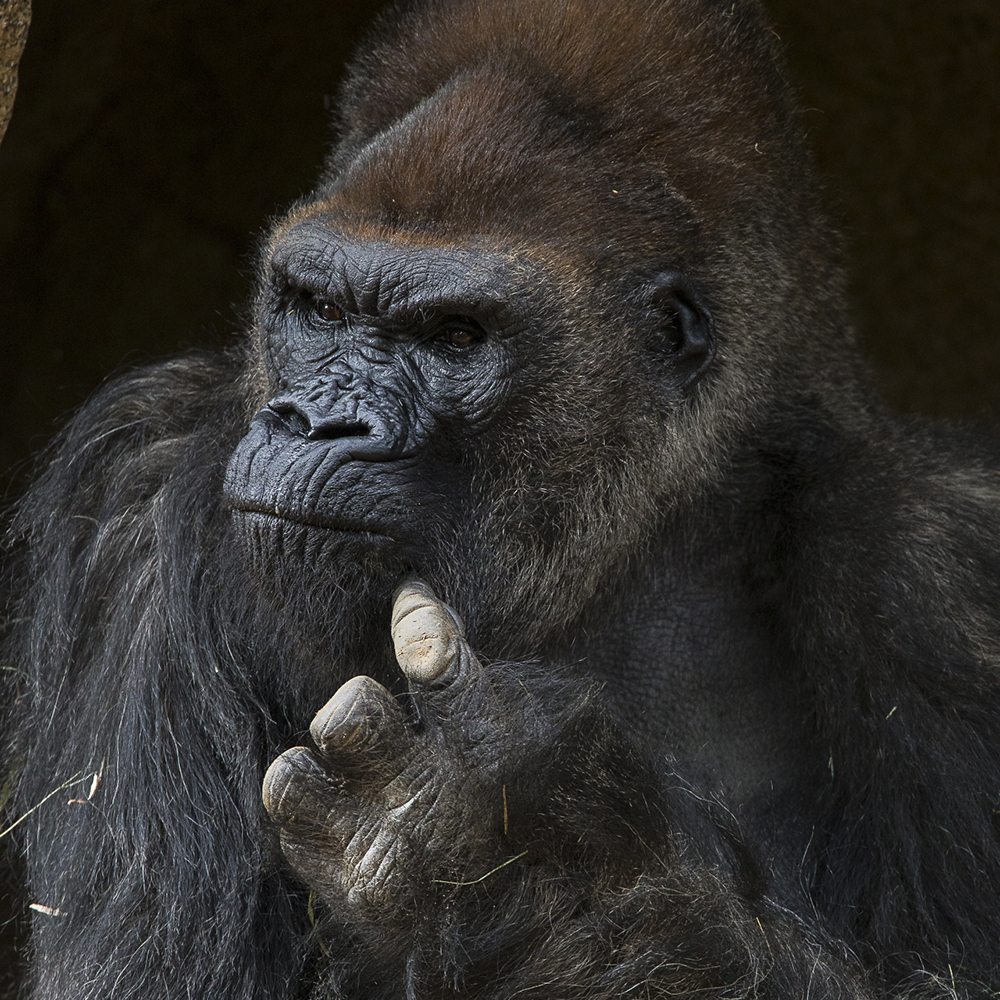
IT’S A GUY THING
Mature male gorillas have a larger saggital crest on their skull, giving them a characteristic, higher domed head than females.
Behind the Scowl
Peggy remembers the first time she saw Winston when he arrived in 1984. “When he stepped out of the travel crate, we all gasped,” she said. “His craggy face—to be honest, it was a little scary!”
That first impression quickly dissolved as Peggy and the other keepers began caring for Winston. “He has such a sweet disposition,” Peggy said. In fact, when a new keeper joins the gorilla team, they start out by working with Winston because “he likes everyone” and is the most accepting of all the gorillas, when it comes to new people.
Winston’s powerful appearance belies his way of interacting with his keepers. “Winston is polite,” Peggy said. “If we are focused on another gorilla or are very busy, he’ll quietly rap on a wall or door to get our attention. It’s a very gentle, understated way of letting us know he wants our attention for something.”
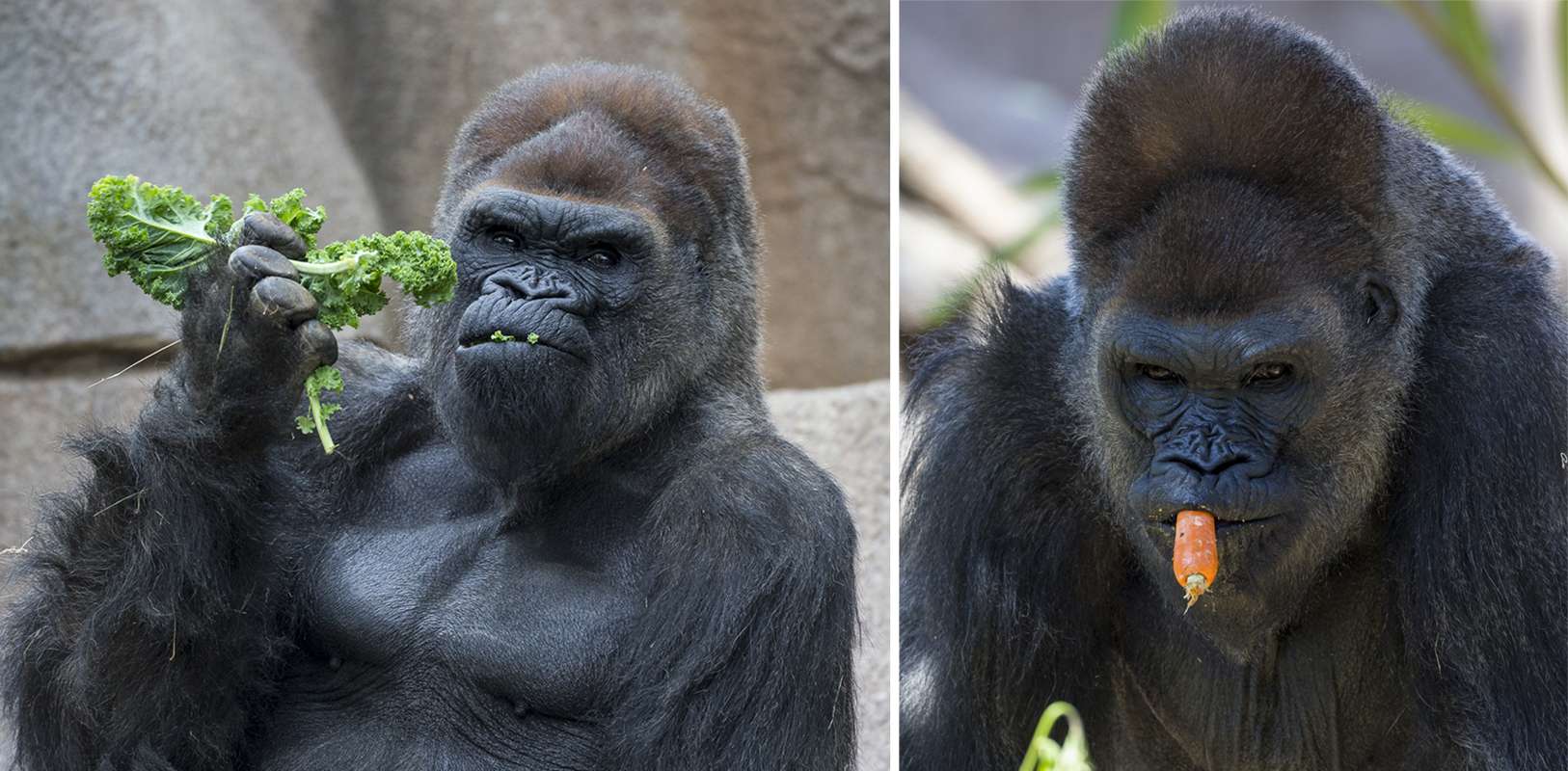
A MATTER OF TASTE
Winston and his troop forage throughout the day, choosing what they like from the many food items keepers provide. Especially favorite foods—prunes, in Winston’s case—are fed in the bedroom area, allowing keepers to get a close look at each individual while they hand out special, high-value foods.
Winston’s Way
Having worked with him from “way back,” Peggy knows pretty much all of Winston’s secrets. He loves prunes but won’t eat honeydew melon—and he doesn’t like to be wet. “He walks around puddles,” Peggy said. “If the ground in the habitat is wet from rain or heavy fog, he’ll use cardboard if we’ve put some out, so he can sit on something dry.” This quirk is interesting, because Winston was raised from a baby in England, and (one would think) should be used to damp conditions. However, as the gorilla keepers have discovered over the years, Winston has his own way of doing things—and sometimes they are not gorilla-like.
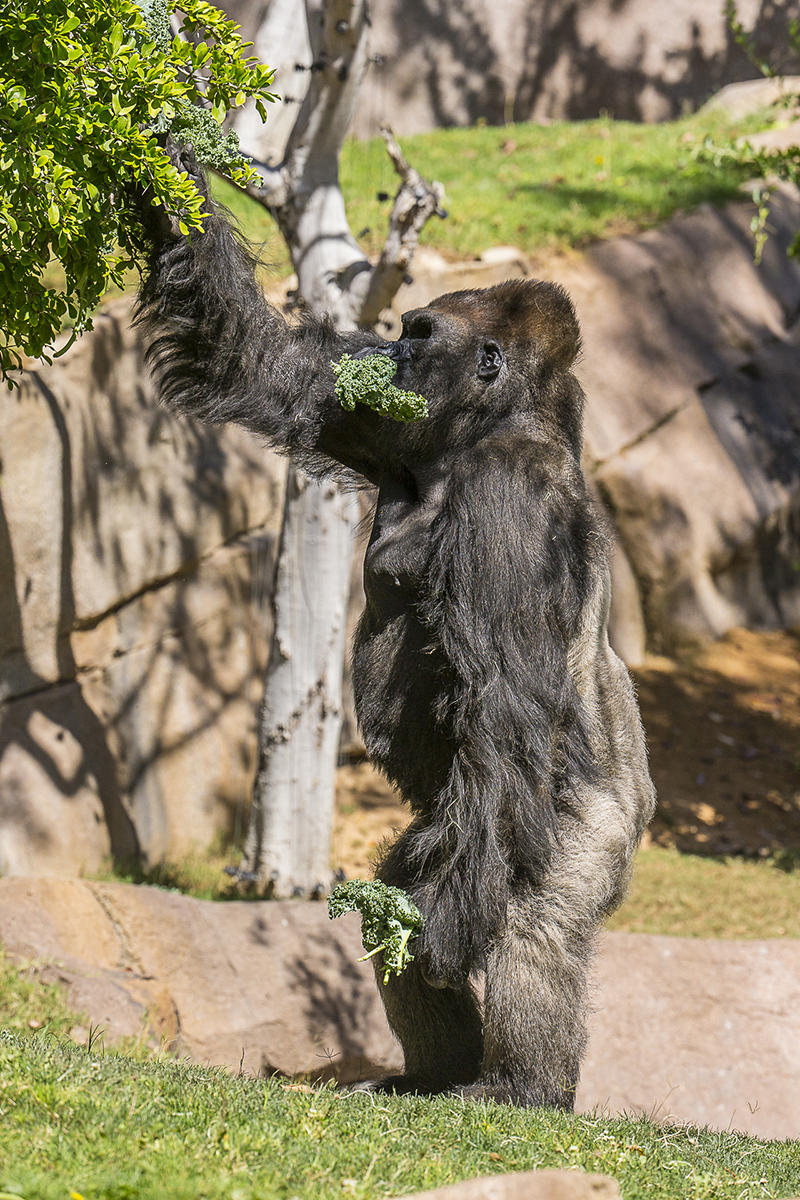
ACTIVE FORAGING
Keepers use the thorns of a Dovyalis tree to place kale and other foods in the gorilla’s habitat, encouraging the great apes to stand and stretch as they feed. This allows for range-of-motion exercise that helps older gorillas like Winston, who has a touch of arthritis.
In their natural habitat, gorillas use vegetation to create a soft sleeping spot, called a night nest, each evening. At the Safari Park and the Zoo, keepers place bedding material in the bedrooms once they have cleaned them. As the troop begins settling in for the night, the gorillas pull and pile and fluff the bedding until it reaches their personal standard of “just right” for sleeping. But not Winston. “He’s anti-nest,” Peggy said, with a laugh. “He pushes all the fluff to the side, clearing a spot on the ground to sleep on!” However, with age comes wisdom (and a need for comfort), and over the last couple of years, Winston has begun pulling some bedding under his rump as he settles in for the night. He’s decided a little “cush for the tush” is a good thing.
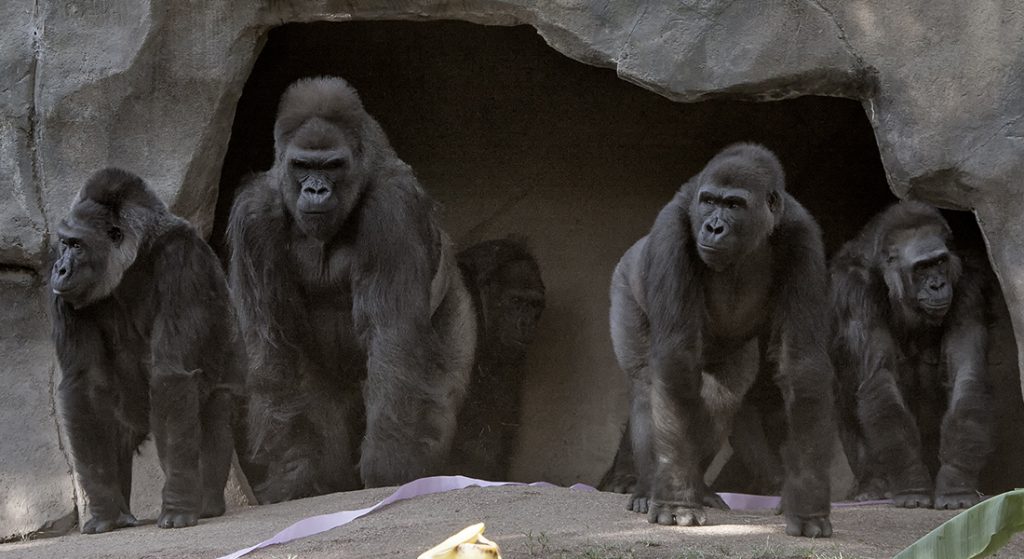
TROOPERS
Winston oversees a troop of seven gorillas—three adult females, two young females, and two adolescent males.
Looking Closely
The Safari Park’s gorilla team’s attention to detail goes beyond what each ape likes or doesn’t like. They observe each troop member carefully on a daily basis. While animals typically hide symptoms of illness, the keepers are so in tune with the gorillas that they can spot when something seems “off.”
In April 2017, keepers noticed Winston appeared a bit lethargic and was not eating or drinking. “If they don’t drink, they dehydrate quickly,” Peggy said. Blood tests and a physical exam were performed under brief anesthesia in the gorilla bedrooms, but nothing rang an alarm. “We were able to give him fluids, and he bounced right back,” Peggy explained. However, six months later, the symptoms returned, with vomiting added to the list of concerns. Since any of these symptoms can be associated with heart problems—and cardiovascular disease is the most common cause of death for great apes in zoos—the decision was made to transport Winston to the Paul Harter Veterinary Medical Center for an in-depth exam.
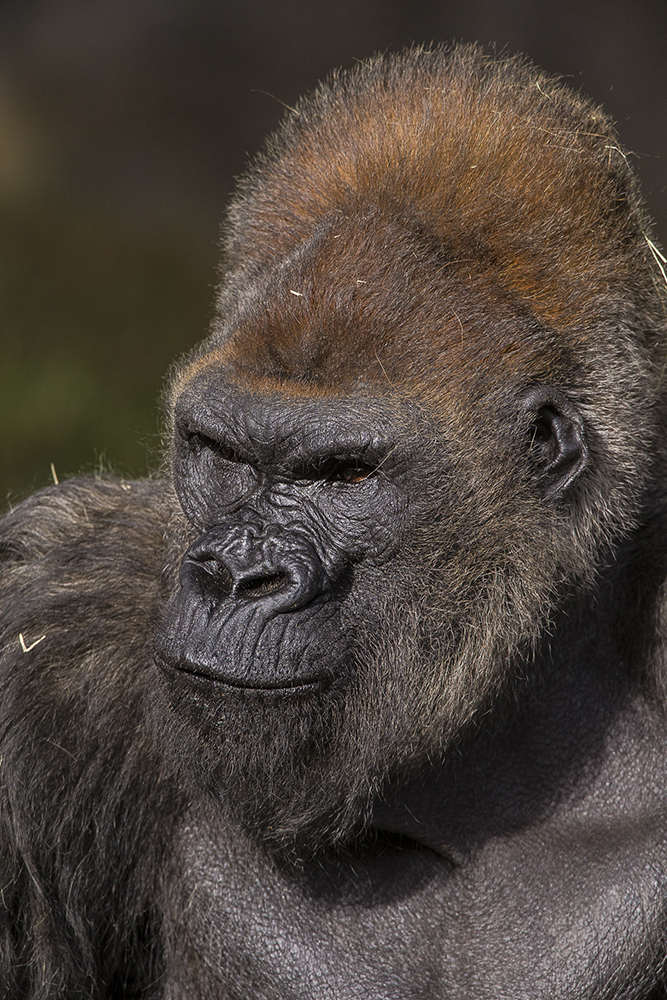
THE LOOK
Among gorillas, a fixed stare is an assertion of power. Winston watches everything that goes on in the troop, and can bring the rambunctious young males back into line with just a look.
“There were a lot of logistics involved,” said Lauren Howard, DVM, associate director of veterinary services for the Safari Park. “We were trying to get a number of things done in a short amount of time [Winston was only under anesthesia for around 90 minutes], so we gathered a remarkable group.” This A-team included experts who usually treat humans: two human cardiologists, as well as a team of three human anesthesiologists to assist our veterinarians with Winston’s anesthesia. While the heart specialists (including two veterinary cardiologists) performed an electrocardiogram and echocardiogram, a veterinary radiologist scanned Winston’s kidneys and liver. The big guy received a dental exam, and multiple radiographs (also called x-rays) were taken as Park veterinarians gave Winston a full examination.
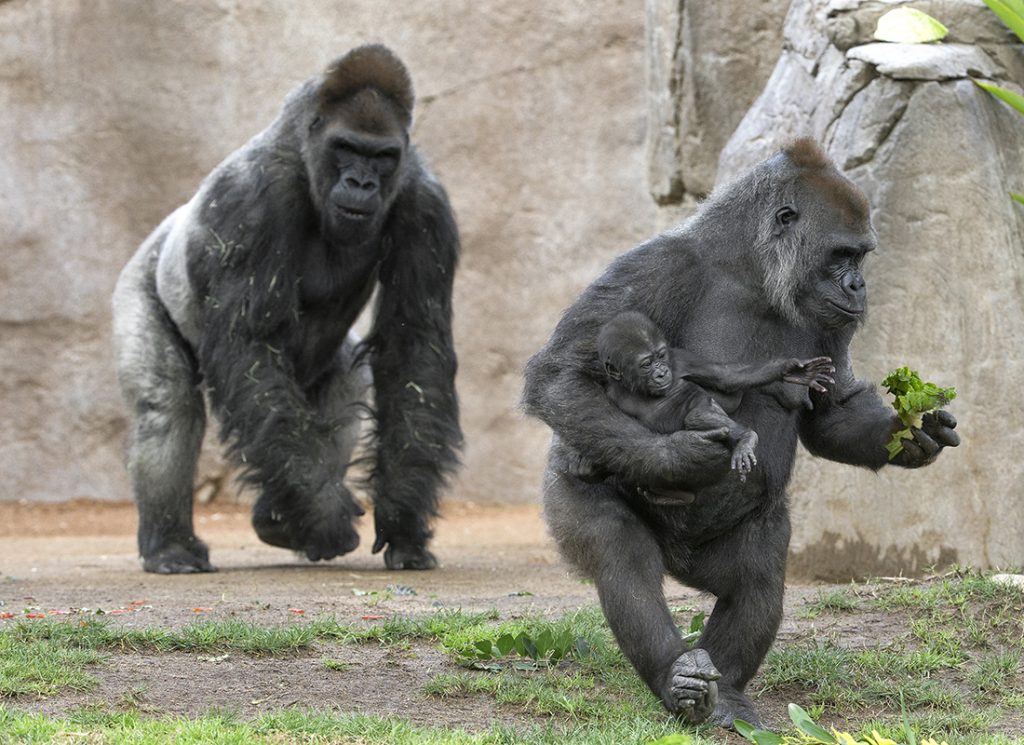
BIG DADDY
Winston has sired nine offspring including Leslie—born in 2016 to Kokomo. At age 46, Winston is one of the oldest breeding gorillas in managed care.
Findings and the Future
The exam provided some good news: “Generally speaking, he’s a pretty healthy guy,” Lauren said. “He does have some arthritis in his left shoulder, for which he receives physical therapy; and although we didn’t find a giant smoking gun [no evidence of heart attack or stroke], there are indications that his heart is not functioning completely normally.”
Doctors will now review their findings to determine the root cause of his symptoms—for example, heart disease, a common condition seen in adult gorillas. In addition, the data on Winston’s heart has been shared with the Great Ape Heart Project (GAHP), a group of subject matter experts working on understanding and treating cardiac disease in apes. “Most of the time in gorillas, as they grow older, the heart becomes fibrotic and can’t contract as well,” Lauren explained. “The GAHP will compare Winston’s results, see where they fall in line with the existing information, and may make some recommendations for enhancing his care.”
Since his checkup in October, Winston has had no other “off” episodes, and he continues to watch over his group. Peggy, who has watched him grow and mature through the years, has only admiration for him. “Winston has matured into a wonderful silverback,” Peggy said. “He’s the perfect leader for this troop.”

